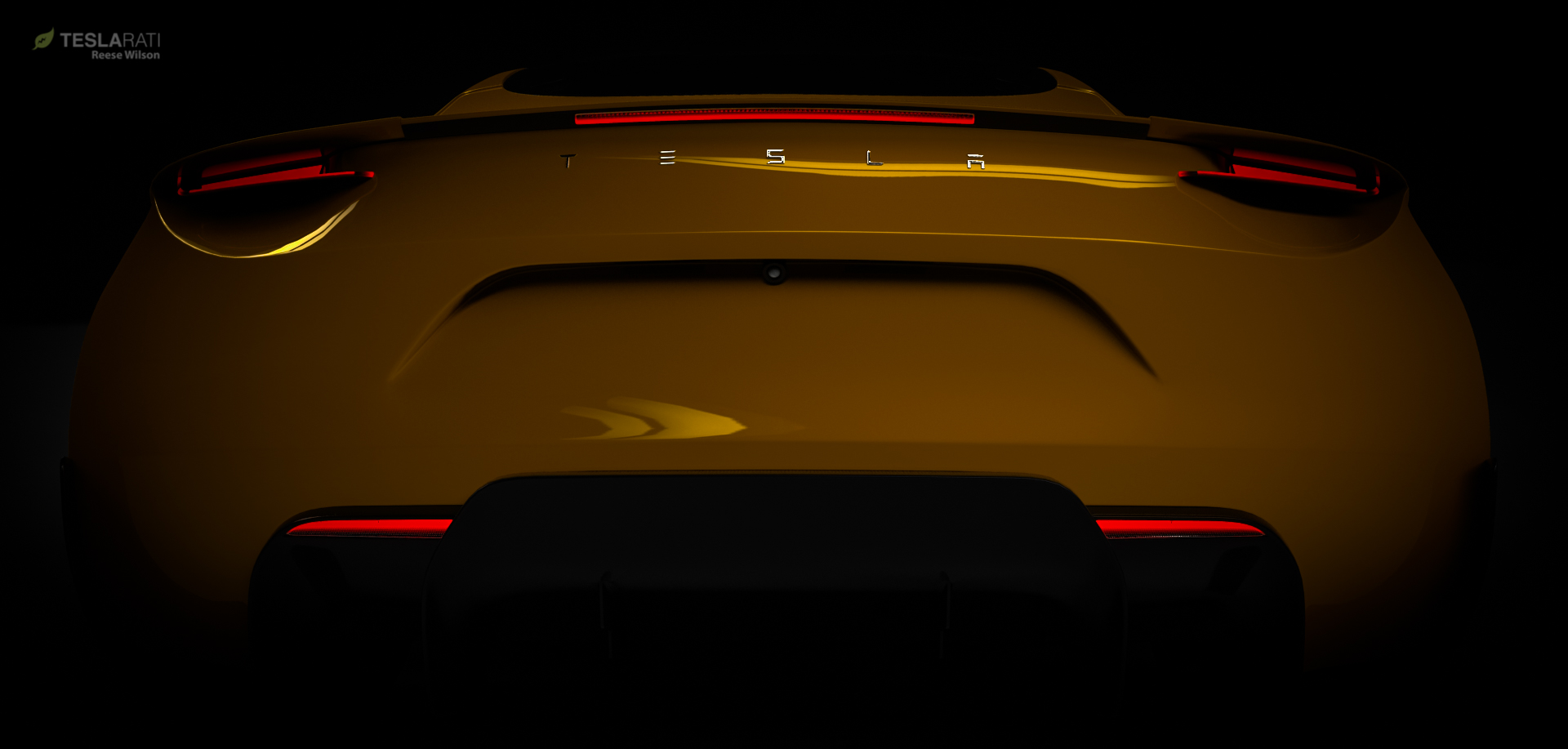
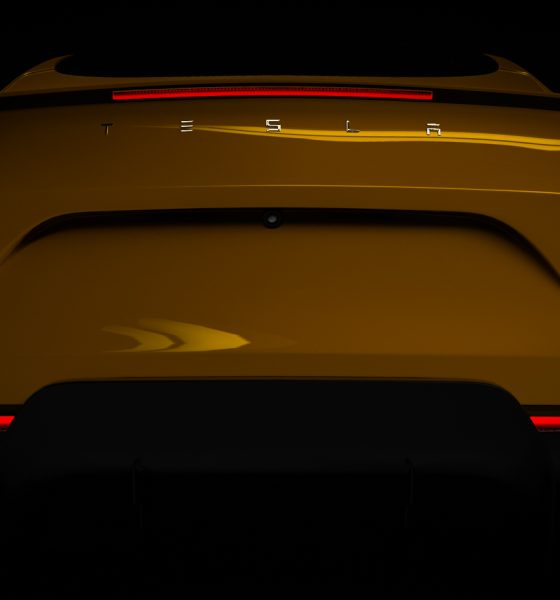
News
Tesla’s next-gen Roadster would likely have ‘Track Mode’ refined by the Model 3 Performance
The next-generation Roadster is set to become the golden standard of Tesla’s electric cars. The all-electric supercar is the very definition of a “Halo Car,” a vehicle designed to showcase the full capabilities of the automaker. The next-gen Roadster’s specs are practically unheard of, such as its 0-60 mph time of 1.9 seconds, its sub-9-second quarter-mile time, its top speed of over 250 mph, and its 200 kWh battery that gives a range of 620 miles per charge.
Being Tesla’s halo car, the next-gen Roadster would likely annihilate any competition on the quarter-mile. Vehicles such as the Model S P100D and the Model X P100D, after all, are known for besting gas-powered supercars on drag races, and those are essentially family cars that just happen to be really quick. That said, inasmuch as the straight-line performance of the next-gen Roadster is all but assured, the vehicle’s capability to handle the demands of track driving are still up for question. Fortunately, Tesla appears to have addressed this through a feature found in the Model 3 Performance — Track Mode.
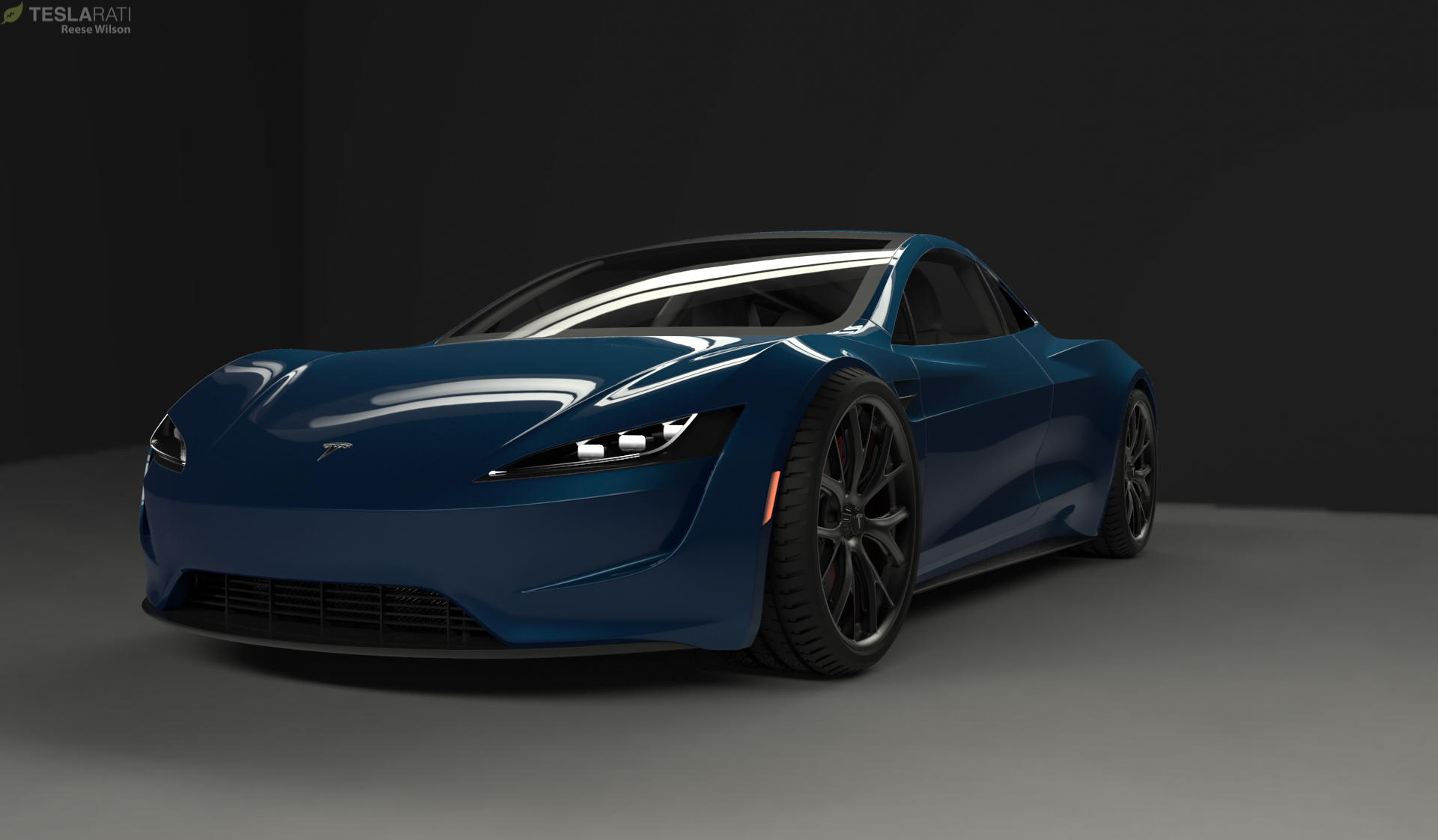
The Model 3 Performance is so far the only vehicle in Tesla’s lineup that has Track Mode. In a statement to Road and Track, Michael Neumeyer, Tesla’s Manager of Chassis Controls, stated that the Model 3 Performance’s Track Mode is not like similar features found in other vehicles, since “(Tesla’s) Track Mode doesn’t disable features, it adds them.” Elon Musk also provided more details about the feature in a recent interview with popular YouTube tech reviewer Marques Brownlee, where he described the feature as an “Expert User Mode” for drivers.
“Track Mode will open up a lot of settings. You can adjust settings, and it’s kinda like an ‘Expert User Mode.’ You can sort of adjust traction control, adjust battery temperature. You can basically configure a bunch of things, and it will tell you, like ‘Hey, you know if you do this, it’s a bit risky. You’re gonna wear out your brakes sooner; you might blow a circuit.’ But like, it’ll be clear — like, you know, this is the risk you’re taking. It’s kinda like if you have a graphics card in a computer. You can go in there and change the settings and you can overclock things,” Musk said.
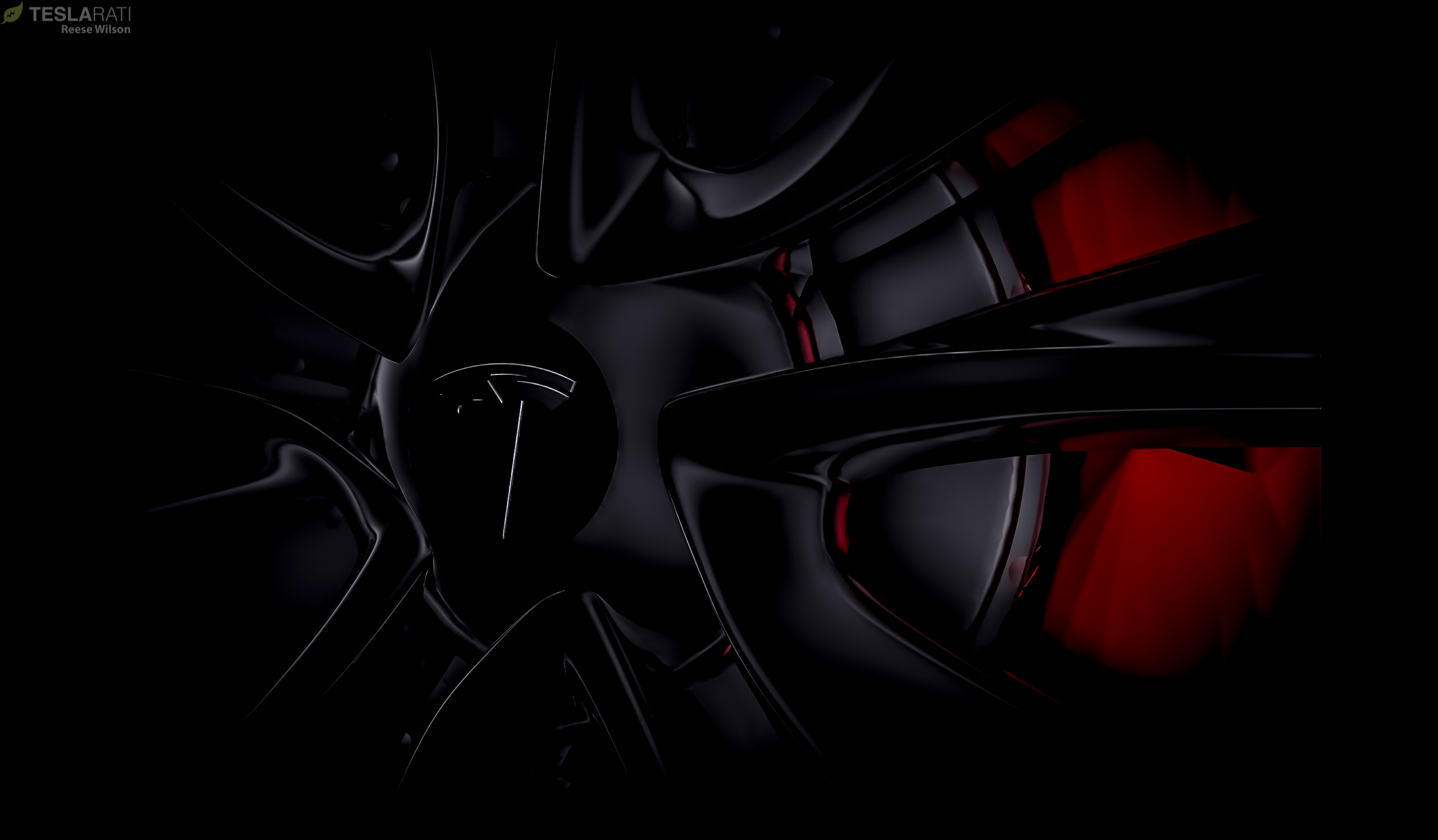
From the perspective of the next-generation Roadster’s expected release in 2020, it appears that Tesla’s rollout of Track Mode in the Model 3 Performance is not just intended to give the electric sedan a considerable selling point — it also appears to be an excellent way for the company to gather data for the all-electric supercar’s own Track Mode (Track Mode V2, perhaps?). Considering that the Roadster is a halo vehicle, there is a very good chance that it would include the feature, and by the time the car gets released in 2020, Tesla would have probably refined Track Mode considerably based on data gathered from the Model 3 Performance. In a way, this makes the Model 3 Performance an even more compelling purchase today, considering that it might have a feature that would eventually be shared with the next-gen Roadster.
When the next-generation Roadster was unveiled last year, Elon Musk dubbed the vehicle as a “hardcore smackdown to gasoline-powered cars.” Later tweets from Elon Musk suggest that Tesla is actually looking to push even more boundaries for the next-gen Roadster. One of these is equipping a variant of the vehicle with actual rocket tech from SpaceX, which, according to Musk, should give the all-electric supercar notable boosts in speed and handling. Elon Musk also mentioned that the next-gen Roadster would be equipped with an “Augmented Mode” feature that will help drivers operate the vehicle.
For the next-generation Roadster to become a true halo car, it must prove its worth in both straight-line races and on the racetrack. If Tesla manages to tune the all-electric supercar to be robust enough to endure extended track driving, the next-gen Roadster could very well find itself beside other legendary halo cars in the automotive industry, such as the iconic Ford GT and the Ferrari F40.

News
Tesla FSD V14.2.1 is earning rave reviews from users in diverse conditions
Tesla’s Full Self-Driving (Supervised) software continues its rapid evolution, with the latest V14.2.1 update drawing widespread praise.

Tesla’s Full Self-Driving (Supervised) software continues its rapid evolution, with the latest V14.2.1 update drawing widespread praise for its smoother performance and smarter decision-making.
Videos and firsthand accounts from Tesla owners highlight V14.2.1 as an update that improves navigation responsiveness, sign recognition, and overall fluidity, among other things. Some drivers have even described it as “more alive than ever,” hinting at the system eventually feeling “sentient,” as Elon Musk has predicted.
FSD V14.2.1 first impressions
Early adopters are buzzing about how V14.2.1 feels less intrusive while staying vigilant. In a post shared on X, Tesla owner @LactoseLunatic described the update as a “huge leap forward,” adding that the system remains “incredibly assertive but still safe.”
Another Tesla driver, Devin Olsenn, who logged ~600 km on V14.2.1, reported no safety disengagements, with the car feeling “more alive than ever.” The Tesla owner noted that his wife now defaults to using FSD V14, as the system is already very smooth and refined.
Adverse weather and regulatory zones are testing grounds where V14.2.1 shines, at least according to testers in snow areas. Tesla watcher Sawyer Merritt shared a video of his first snowy drive on unplowed rural roads in New Hampshire, where FSD did great and erred on the side of caution. As per Merritt, FSD V14.2.1 was “extra cautious” but it performed well overall.
Sign recognition and freeway prowess
Sign recognition also seemed to show improvements with FSD V14.2.1. Longtime FSD tester Chuck Cook highlighted a clip from his upcoming first-impressions video, showcasing improved school zone behavior. “I think it read the signs better,” he observed, though in standard mode, it didn’t fully drop to 15 mph within the short timeframe. This nuance points to V14.2.1’s growing awareness of temporal rules, a step toward fewer false positives in dynamic environments.
FSD V14.2.1 also seems to excel in high-stress highway scenarios. Fellow FSD tester @BLKMDL3 posted a video of FSD V14.2.1 managing a multi-lane freeway closure due to a police chase-related accident. “Perfectly handles all lanes of the freeway merging into one,” the Tesla owner noted in his post on X.
FSD V14.2.1 was released on Thanksgiving, much to the pleasant surprise of Tesla owners. The update’s release notes are almost identical to the system’s previous iteration, save for one line item read, “Camera visibility can lead to increased attention monitoring sensitivity.”
News
Tesla FSD Supervised ride-alongs in Europe begin in Italy, France, and Germany
The program allows the public to hop in as a non-driving observer to witness FSD navigate urban streets firsthand.
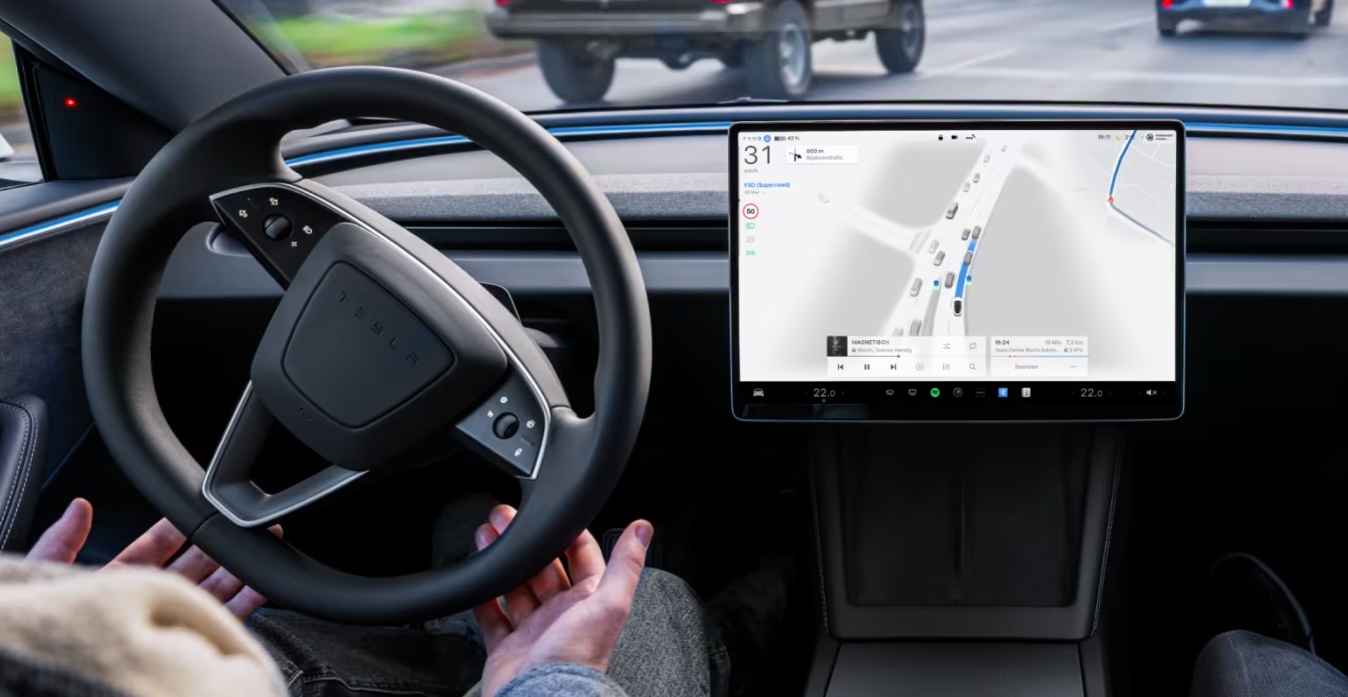
Tesla has kicked off passenger ride-alongs for Full Self-Driving (Supervised) in Italy, France and Germany. The program allows the public to hop in as a non-driving observer to witness FSD navigate urban streets firsthand.
The program, detailed on Tesla’s event pages, arrives ahead of a potential early 2026 Dutch regulatory approval that could unlock a potential EU-wide rollout for FSD.
Hands-Off Demos
Tesla’s ride-along invites participants to “ride along in the passenger seat to experience how it handles real-world traffic & the most stressful parts of daily driving, making the roads safer for all,” as per the company’s announcement on X through its official Tesla Europe & Middle East account.
Sign-ups via localized pages offer free slots through December, with Tesla teams piloting vehicles through city streets, roundabouts and highways.
“Be one of the first to experience Full Self-Driving (Supervised) from the passenger seat. Our team will take you along as a passenger and show you how Full Self-Driving (Supervised) works under real-world road conditions,” Tesla wrote. “Discover how it reacts to live traffic and masters the most stressful parts of driving to make the roads safer for you and others. Come join us to learn how we are moving closer to a fully autonomous future.”
Building trust towards an FSD Unsupervised rollout
Tesla’s FSD (Supervised) ride-alongs could be an effective tool to build trust and get regular car buyers and commuters used to the idea of vehicles driving themselves. By seating riders shotgun, Tesla could provide participants with a front row seat to the bleeding edge of consumer-grade driverless systems.
FSD (Supervised) has already been rolled out to several countries, such as the United States, Canada, Australia, New Zealand, and partially in China. So far, FSD (Supervised) has been received positively by drivers, as it really makes driving tasks and long trips significantly easier and more pleasant.
FSD is a key safety feature as well, which became all too evident when a Tesla driving on FSD was hit by what seemed to be a meteorite in Australia. The vehicle moved safely despite the impact, though the same would likely not be true had the car been driven manually.
News
Swedish union rep pissed that Tesla is working around a postal blockade they started
Tesla Sweden is now using dozens of private residences as a way to obtain license plates for its vehicles.

Two years into their postal blockade, Swedish unions are outraged that Tesla is still able to provide its customers’ vehicles with valid plates through various clever workarounds.
Seko chairman Gabriella Lavecchia called it “embarrassing” that the world’s largest EV maker, owned by CEO Elon Musk, refuses to simply roll over and accept the unions’ demands.
Unions shocked Tesla won’t just roll over and surrender
The postal unions’ blockade began in November 2023 when Seko and IF Metall-linked unions stopped all mail to Tesla sites to force a collective agreement. License plates for Tesla vehicles instantly became the perfect pressure point, as noted in a Dagens Arbete report.
Tesla responded by implementing initiatives to work around the blockades. A recent investigation from Arbetet revealed that Tesla Sweden is now using dozens of private residences, including one employee’s parents’ house in Trångsund and a customer-relations staffer’s home in Vårby, as a way to obtain license plates for its vehicles.
Seko chairman Gabriella Lavecchia is not pleased that Tesla Sweden is working around the unions’ efforts yet again. “It is embarrassing that one of the world’s largest car companies, owned by one of the world’s richest people, has sunk this low,” she told the outlet. “Unfortunately, it is completely frivolous that such a large company conducts business in this way.”
Two years on and plates are still being received
The Swedish Transport Agency has confirmed Tesla is still using several different workarounds to overcome the unions’ blockades.
As noted by DA, Tesla Sweden previously used different addresses to receive its license plates. At one point, the electric vehicle maker used addresses for car care shops. Tesla Sweden reportedly used this strategy in Östermalm in Stockholm, as well as in Norrköping and Gothenburg.
Another strategy that Tesla Sweden reportedly implemented involved replacement plates being ordered by private individuals when vehicles change hands from Tesla to car buyers. There have also been cases where the police have reportedly issued temporary plates to Tesla vehicles.









